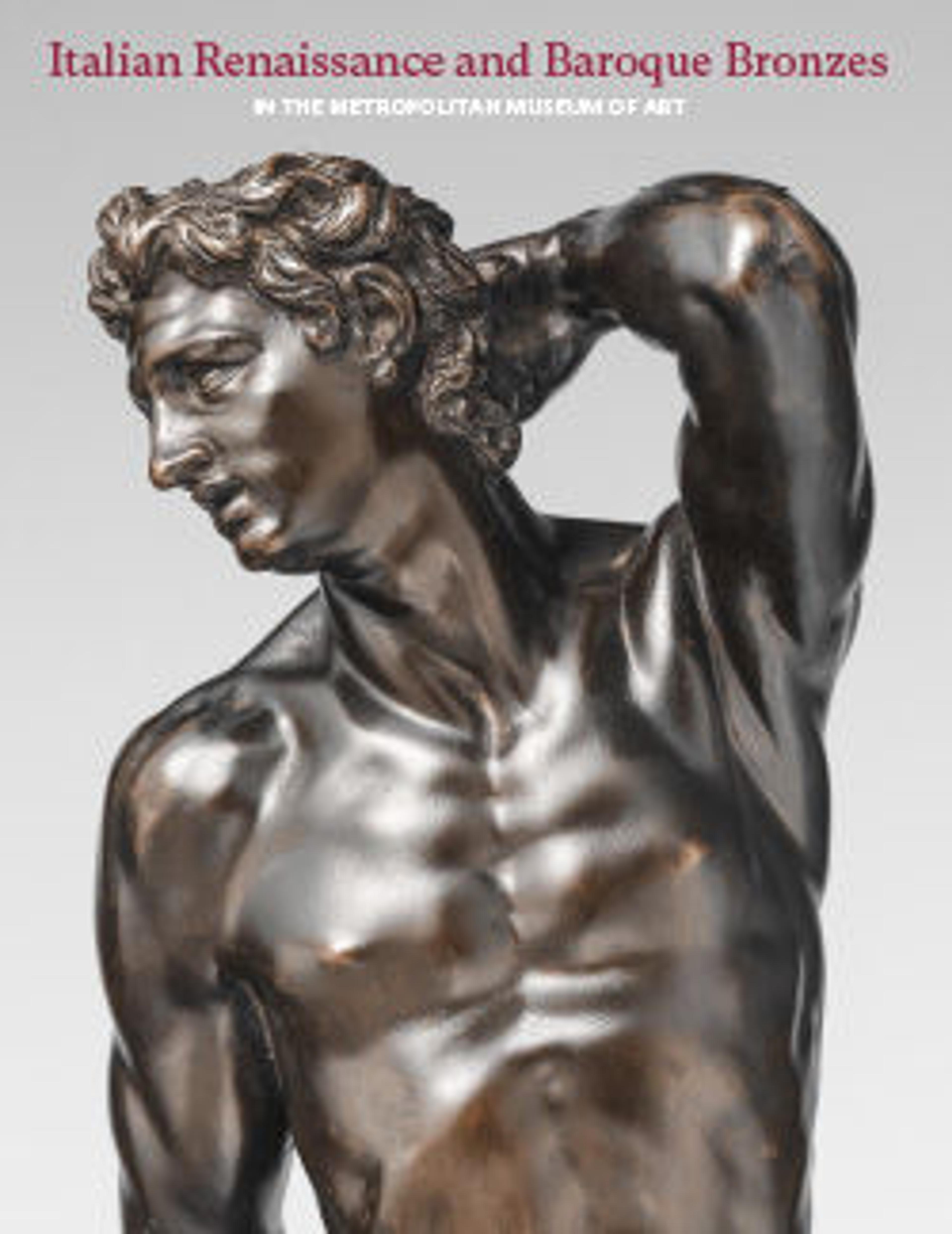Oil lamp based on the form of an African’s head
This lamp is a composite of multiple parts. A small vessel in the shape of a horned, open-mouthed bust sits atop a base, the protruding tongue serving as a runnel for the wick. Support comes from three cloven legs, which are wrapped in acanthus leaves and vines. These converge at a central stand, where three monstrous faces bedecked with festoons offer a chorus of silent screams. Despite the echoes between such faces’ gaping mouths and that of the lamp, the vessel and base were conceived separately, joined later with a screw.
The vessel represents a design widespread during the Renaissance, with numerous extant versions in museums worldwide.[1] It is a particular variant on a wider array of bronze lamps styled on imagery of Black Africans.[2] Such lamps derived from ancient prototypes and relate to a broader history of antique vessels shaped as heads of Black Africans.[3] Renaissance lamps of this type approached their subjects in a dehumanizing fashion, exaggerating facial features and adding horns and foliage, attributes typical of satyrs.[4] Such lamps were rooted in the treatment of race in the Renaissance and speak to the extensive, vile stereotyping of Black Africans during the period.[5] The Veneto, where this bronze was produced, notably achieved wealth through the commerce and ownership of slaves, including from sub-Saharan Africa.[6]
-RC
Footnotes
(For key to shortened references see bibliography in Allen, Italian Renaissance and Baroque Bronzes in The Metropolitan Museum of Art. NY: The Metropolitan Museum of Art, 2022.)
1. See, for example, Bode-Museum, 7302; Museo Civico Medievale, Bologna, 1410; Louvre, OA 2800.
2. The Met’s bronze is listed among a subset of such lamps grouped by shared design in De Winter 1986, p. 137 n. 74.
3. Boucher 1970, pp. 245–49; Spicer 2012, p. 11. For examples of such ancient vessels, see Snowden 1970, pp. 27–28.
4. See, e.g., Beck and Bol 1985, pp. 501–3.
5. Lowe 2005.
6. Lowe 2013 (with further bibliography); on the intersections of slavery and race in premodern Italy, see Epstein 2001.
The vessel represents a design widespread during the Renaissance, with numerous extant versions in museums worldwide.[1] It is a particular variant on a wider array of bronze lamps styled on imagery of Black Africans.[2] Such lamps derived from ancient prototypes and relate to a broader history of antique vessels shaped as heads of Black Africans.[3] Renaissance lamps of this type approached their subjects in a dehumanizing fashion, exaggerating facial features and adding horns and foliage, attributes typical of satyrs.[4] Such lamps were rooted in the treatment of race in the Renaissance and speak to the extensive, vile stereotyping of Black Africans during the period.[5] The Veneto, where this bronze was produced, notably achieved wealth through the commerce and ownership of slaves, including from sub-Saharan Africa.[6]
-RC
Footnotes
(For key to shortened references see bibliography in Allen, Italian Renaissance and Baroque Bronzes in The Metropolitan Museum of Art. NY: The Metropolitan Museum of Art, 2022.)
1. See, for example, Bode-Museum, 7302; Museo Civico Medievale, Bologna, 1410; Louvre, OA 2800.
2. The Met’s bronze is listed among a subset of such lamps grouped by shared design in De Winter 1986, p. 137 n. 74.
3. Boucher 1970, pp. 245–49; Spicer 2012, p. 11. For examples of such ancient vessels, see Snowden 1970, pp. 27–28.
4. See, e.g., Beck and Bol 1985, pp. 501–3.
5. Lowe 2005.
6. Lowe 2013 (with further bibliography); on the intersections of slavery and race in premodern Italy, see Epstein 2001.
Artwork Details
- Title: Oil lamp based on the form of an African’s head
- Artist: Manner of Andrea Briosco, called Riccio (Italian, Trent 1470–1532 Padua)
- Date: mid-16th century or later
- Culture: probably Italian, Padua
- Medium: Bronze
- Dimensions: Overall (confirmed): 8 × 6 3/4 × 6 1/2 in. (20.3 × 17.1 × 16.5 cm)
- Classification: Sculpture-Bronze
- Credit Line: Gift of Irwin Untermyer, 1968
- Object Number: 68.141.24
- Curatorial Department: European Sculpture and Decorative Arts
More Artwork
Research Resources
The Met provides unparalleled resources for research and welcomes an international community of students and scholars. The Met's Open Access API is where creators and researchers can connect to the The Met collection. Open Access data and public domain images are available for unrestricted commercial and noncommercial use without permission or fee.
To request images under copyright and other restrictions, please use this Image Request form.
Feedback
We continue to research and examine historical and cultural context for objects in The Met collection. If you have comments or questions about this object record, please contact us using the form below. The Museum looks forward to receiving your comments.
